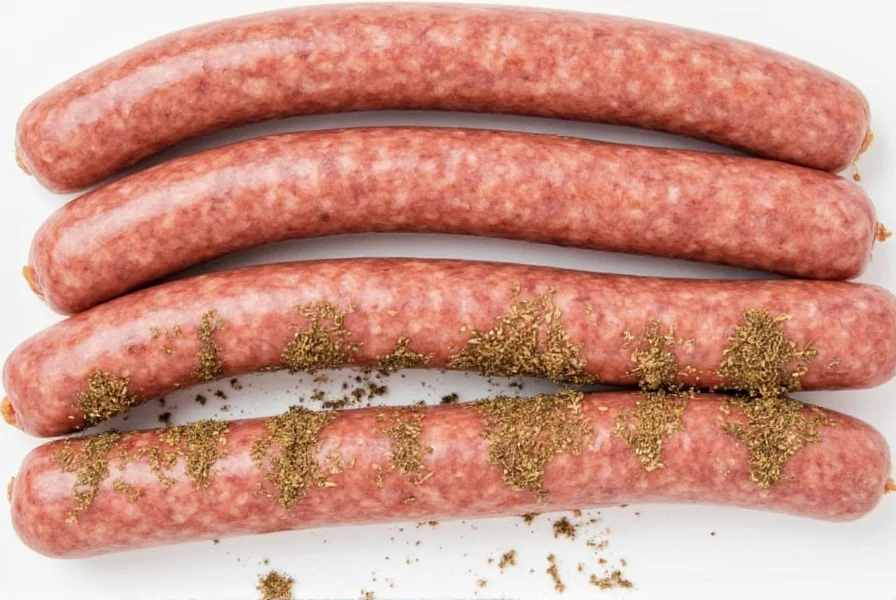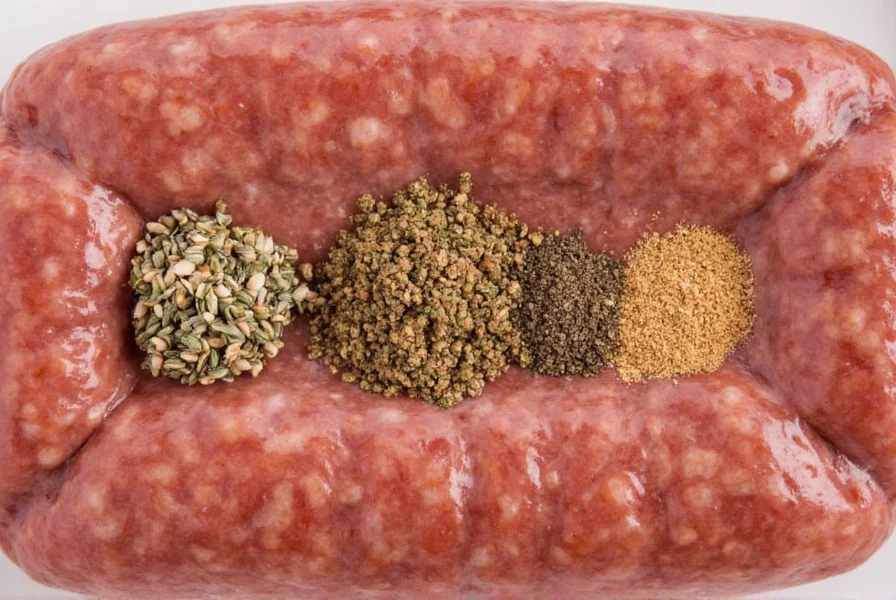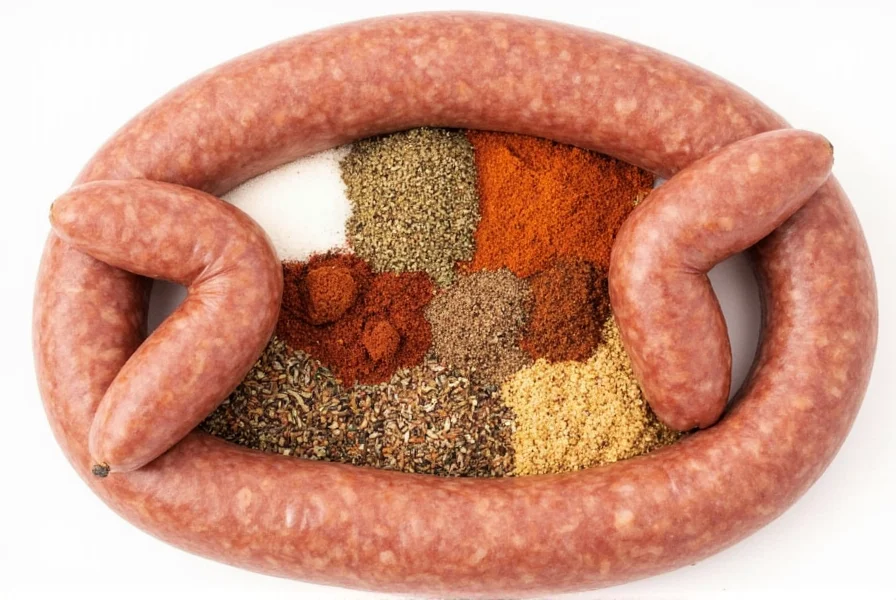The core spices in traditional American breakfast sausage are sage, black pepper, red pepper flakes, and a blend of warming spices including nutmeg and allspice. Most commercial and homemade recipes use 1-2% dried sage by weight as the signature flavor, complemented by 0.5-1% black pepper and smaller amounts of thyme, marjoram, and cayenne for depth and subtle heat.
Breakfast sausage stands apart from other sausage varieties primarily due to its distinctive spice profile. While regional variations exist, the classic American breakfast sausage relies on a carefully balanced blend that creates its characteristic savory, slightly herbal, and warmly spiced flavor. Understanding these spices helps home cooks recreate authentic flavors and allows consumers to make informed choices about store-bought options.
Essential Spices in Traditional Breakfast Sausage
Breakfast sausage's unique flavor comes from a specific combination of spices that work together to create its signature taste. Unlike Italian sausage which features fennel prominently, or chorizo with its paprika base, breakfast sausage has its own distinctive profile.
Sage: The Signature Flavor
Sage is unquestionably the most important spice in breakfast sausage, providing that unmistakable earthy, slightly peppery flavor that defines the product. Dried rubbed sage is typically used at 1-2% of the meat weight in professional recipes. The quality of sage makes a significant difference—freshly ground sage from whole leaves provides superior flavor compared to pre-ground powder that may have lost potency.
Black Pepper: The Essential Companion
Freshly cracked black pepper complements the sage with its sharp, pungent notes. Most recipes call for 0.5-1% black pepper by weight. Coarsely ground pepper provides texture and bursts of flavor throughout the cooked sausage, while fine pepper creates a more uniform heat.
Red Pepper Flakes: Subtle Heat
While not always listed prominently, red pepper flakes (typically cayenne-based) add a gentle warmth that balances the earthiness of the sage. Most traditional recipes include 0.1-0.3% red pepper flakes. This subtle heat shouldn't be overwhelming but rather enhances the other flavors.
Supporting Spice Blend
Beyond these primary spices, breakfast sausage typically includes a supporting cast that adds complexity:
- Nutmeg (0.05-0.1%): Adds warm, slightly sweet notes
- Allspice (0.05-0.1%): Contributes clove-like warmth
- Thyme (0.05-0.1%): Provides herbal complexity
- Marjoram (0.05%): Offers subtle floral notes
- Ginger (0.05%): In some regional variations
| Spice | Typical Percentage | Flavor Contribution |
|---|---|---|
| Sage | 1-2% | Earthy, herbal, signature flavor |
| Black Pepper | 0.5-1% | Sharp, pungent, foundational heat |
| Red Pepper Flakes | 0.1-0.3% | Subtle warmth, background heat |
| Nutmeg | 0.05-0.1% | Warm, slightly sweet complexity |
| Allspice | 0.05-0.1% | Clove-like warmth, depth |
Regional Variations in Breakfast Sausage Spices
While the basic spice profile remains consistent across the United States, regional preferences have created some interesting variations:
Southern-Style Breakfast Sausage
Southern recipes often feature a more robust sage presence with slightly higher red pepper content. Some traditional Southern butchers add a touch of dried rosemary or increase the black pepper for a more pronounced kick. The "hot" variety common in the South typically doubles the red pepper flakes while maintaining the sage dominance.
Midwestern and Northeastern Variations
Cooking what spices are in breakfast sausage for holiday mornings, many Midwestern and Northeastern families incorporate a pinch of ground cloves or mace for added warmth during colder months. Some Pennsylvania Dutch recipes include a small amount of dried summer savory alongside the traditional blend.
Maple-Infused Breakfast Sausage
Popular in New England and increasingly nationwide, maple breakfast sausage maintains the core spice blend but adds 1-2% pure maple syrup or maple flavoring. This sweet-savory combination works particularly well with the traditional sage and pepper profile. When exploring what spices are in maple breakfast sausage, note that the spice percentages remain similar to traditional versions—the maple is an addition rather than a replacement.
Creating Your Own Breakfast Sausage Spice Blend
Understanding what spices are in breakfast sausage allows you to create your own custom blend. Here's a professional ratio for 1 pound of ground pork:

- 2 teaspoons dried rubbed sage (freshly ground from leaves)
- 1 teaspoon freshly cracked black pepper
- ¼ teaspoon red pepper flakes
- ⅛ teaspoon ground nutmeg
- ⅛ teaspoon ground allspice
- ⅛ teaspoon dried thyme
- Salt to taste (typically 1.5-2% of meat weight)
Mix these spices thoroughly with 1 pound of ground pork (preferably 70-80% lean), then refrigerate for at least 2 hours before cooking to allow flavors to meld. This homemade breakfast sausage spice ratio provides the authentic flavor profile while allowing customization—reduce the red pepper for milder sausage or increase the sage for a more traditional taste.
Commercial Breakfast Sausage Spice Profiles
When examining what spices are in Jimmy Dean breakfast sausage versus other brands, you'll notice subtle differences in spice ratios and additional ingredients:
- Jimmy Dean Original: Features a balanced sage profile with noticeable black pepper and a hint of red pepper. Contains additional preservatives and fillers that affect spice perception.
- Johnsonville Original: Slightly higher sage content with more prominent red pepper notes. Often includes natural flavorings that enhance the spice profile.
- Local Butcher Shop Varieties: Typically feature more robust spice levels with higher quality, freshly ground spices. Often contain fewer fillers, making the spice flavors more pronounced.
Reading ingredient labels carefully reveals what spices are in store-bought breakfast sausage. Look for "spice blend" followed by specific spices—products listing "sage" early in the ingredients typically have a more authentic flavor profile. Avoid products where "spices" appears as a single vague ingredient, as this often indicates a less distinctive or lower quality blend.
Common Misconceptions About Breakfast Sausage Spices
Several misconceptions persist about what spices are in breakfast sausage:
- "Breakfast sausage contains fennel" - This is incorrect; fennel is characteristic of Italian sausage, not breakfast sausage.
- "All breakfast sausage is very spicy" - Traditional breakfast sausage has subtle heat; "hot" varieties are a specific subcategory.
- "Maple sausage replaces spices with sweetness" - Quality maple sausage maintains the traditional spice profile with maple as an additional flavor.

How Spice Ratios Affect Flavor Balance
The precise ratios in what spices are in breakfast sausage create the distinctive flavor balance. Too much sage makes the sausage medicinal, while too little loses the characteristic flavor. Professional butchers emphasize that the black pepper should be noticeable but not dominant, serving as a foundation for the more distinctive sage flavor.
When adjusting recipes, remember that spice potency varies by brand and freshness. Older spices may require slightly higher quantities to achieve the same flavor impact. For the most authentic taste of what spices are in breakfast sausage, use freshly ground whole spices whenever possible—this makes a noticeable difference in the final product's complexity and brightness.
Frequently Asked Questions
What is the most important spice in breakfast sausage?
Sage is the most important and characteristic spice in breakfast sausage, typically comprising 1-2% of the meat weight in professional recipes. It provides the distinctive earthy, herbal flavor that defines American breakfast sausage and differentiates it from other sausage varieties.
Does breakfast sausage contain fennel like Italian sausage?
No, traditional breakfast sausage does not contain fennel. Fennel is characteristic of Italian sausage, while breakfast sausage relies on sage as its primary spice. This is a common misconception—breakfast sausage has a completely different spice profile centered around sage, black pepper, and warming spices like nutmeg and allspice.
How can I make breakfast sausage less spicy?
To make breakfast sausage less spicy, reduce or eliminate the red pepper flakes while maintaining the core sage and black pepper. Traditional breakfast sausage has only subtle heat, so decreasing the red pepper from 0.3% to 0.1% or omitting it entirely will create a milder product while preserving the characteristic flavor profile.
What's the difference between regular and maple breakfast sausage spices?
Maple breakfast sausage maintains the traditional spice blend (sage, black pepper, etc.) while adding pure maple syrup or maple flavoring. The spice percentages remain similar to regular breakfast sausage—the maple is an additional flavor component rather than a replacement for the traditional spices. Quality maple sausage balances the sweet maple notes with the savory spice profile.
Can I substitute fresh herbs for dried spices in breakfast sausage?
Yes, but with adjustments. Use three times the amount of fresh sage compared to dried (e.g., 1 tablespoon fresh for 1 teaspoon dried), as fresh herbs are less concentrated. Fresh herbs provide brighter flavor but may alter texture slightly. For best results in homemade breakfast sausage, combine fresh sage with dried black pepper and other dried warming spices for optimal flavor balance.











 浙公网安备
33010002000092号
浙公网安备
33010002000092号 浙B2-20120091-4
浙B2-20120091-4